Drink in the natural beauty and wines of the East Coast
To celebrate this month’s Great Eastern Wine Week, Linda Smith spoke to four businesses about their involvement with the festival, and why they love being able to share their favourite patch of Tassie with others.
Food and Wine
Don't miss out on the headlines from Food and Wine. Followed categories will be added to My News.
August is typically the quietest month for winemakers, farmers and food producers on Tasmania’s East Coast.
But now that Spring has arrived, the annual Great Eastern Wine Week is about to kick off, offering a bumper calendar of culinary events to kickstart the busy tourist season.
After two years of border restrictions impacting incoming tourism, a raft of new culinary and cultural experiences have been included as part of this year’s festival, which is offering its most impressive line-up to date.
Running from September 9-18, and spanning 221km of Tasmania’s pristine eastern coastline, Great Eastern Wine Week features more than 60 food and wine events showcasing the region’s quality produce.
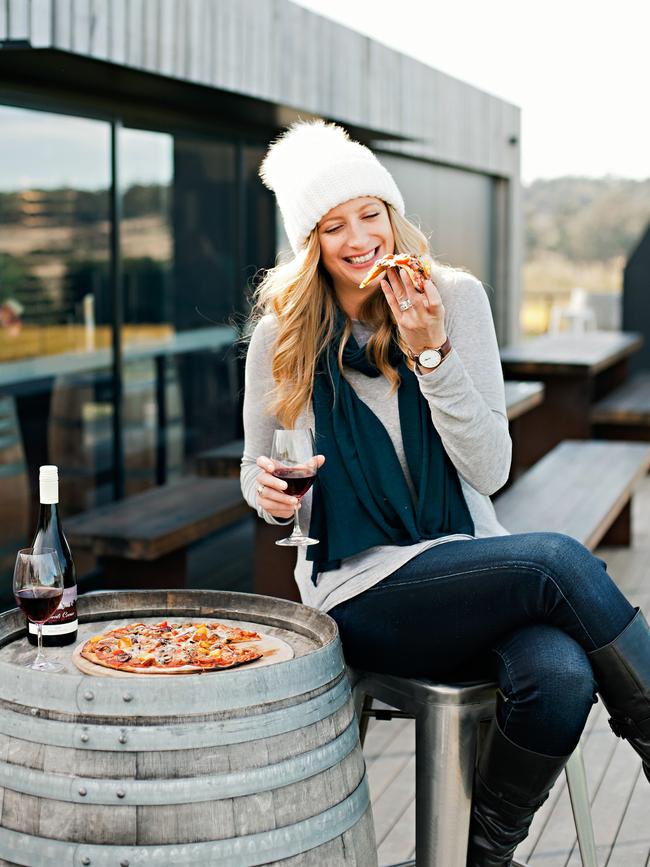
Visitors to the region will be able to eat, drink, tour vineyards, meet producers and be surrounded by the natural beauty of the East Coast, including Freycinet National Park, Wineglass Bay and Bay of Fires.
Clientele for the 10-day festival was previously Tasmanian, but extra effort has been put in post-Covid to attract a wider audience with about 30-40 per cent of visitors expected to flock from interstate.
Events include a Black Tie and Blundstone cocktail party at the new Devil’s Corner cellar door, high tea with matched wines at Craigie Knowe vineyard, a Great Eastern Wine Cruise with Wineglass Bay Cruises, a Wild Abundance cooking with game workshop at Twamley Farm, and a Grazing Walk with Mayfield Estate and Tasman Sea Salt.
To celebrate the festival and the start of the tourist season, TasWeekend spoke to four businesses about their involvement with the festival, their passion for living and working on Tasmania’s East Coast and why they love being able to share their favourite patch of Tassie with others.
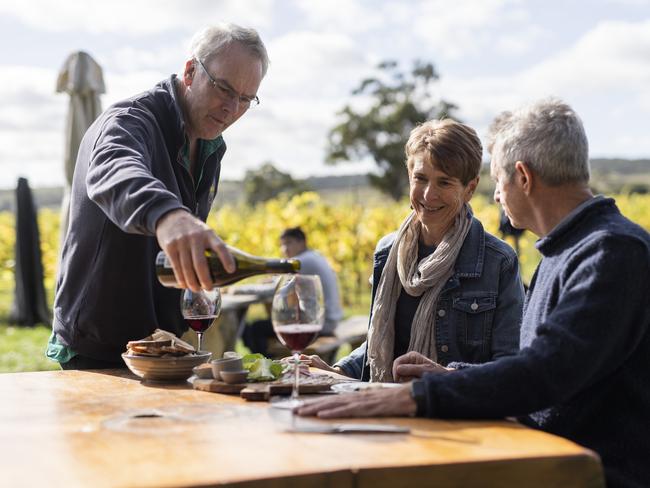
GLENN TRAVERS
CRAIGIE KNOWE VINEYARD
Glenn Travers was living and working in Hobart when a short getaway on Tasmania’s East Coast nine years ago – which included visits to a couple of wineries – prompted him to buy a vineyard of his own.
Previously the state manager of Cheaper Liquor, and then the owner of a wholesale wine business, Travers decided that rather than just sell wine for other people, he’d like to make wine of his own.
“On Monday I got back to the office and I had an email from LJ Hooker saying that Craigie Knowe was for sale, and I said ‘oh my goodness me, the stars have aligned,’’ Travers recalls. “And three months later I owned a vineyard.’’
He and his ex-wife Sandy initially ran the business. Now it’s Travers and son Alex – who studies viticulture at university – at the helm, along with winemaker Matt Wood. Alex’s partner, Xinruo Wang, is a pastry chef, and offers high tea for vineyard guests.
The 20ha vineyard was established in 1979, making it one of the oldest on Tasmania’s East Coast, and also one of the first vineyards to be established in Tasmania.
The vineyard thrived under the ownership of founder John Austwick, a dentist from Hobart with an interest in wine.
“He was such a pioneer of the time, with many local farmers thinking he was crazy, but they quickly realised John was onto something and planted their own vines,’’ Travers says.
“A passionate Bordeaux Blend cabernet fan, John initially planted cab sauv, cab franc, merlot and petite verdot, but pinot noir and riesling soon followed. He made his own wine on site in what is now the cellar door, and built a great reputation as an exceptional cool climate winemaker.’’
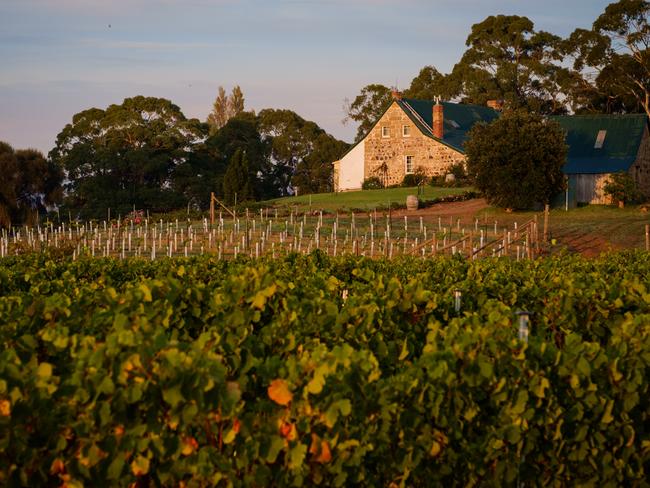
The vineyard changed hands in 2009 and by the time Travers purchased it in 2013 it was overrun and needed some love.
But he says after some hard work getting things up and running, he produced his first vintage in 2015 and jokes he’s been “having a party ever since”.
“I guess when we arrived at Craigie Knowe we felt much like the early settlers must have felt; we had chosen to have the courage to seize an opportunity, we had a vision, dedication, business skills and a willingness to work hard but with mild trepidation about ‘was that going to be enough?’ to create what we were seeking to do,’’ Travers says.
“Our philosophy is to grow exceptional fruit so our winemaker can weave his magic with minimal intervention. We do this by being meticulous in the vineyard, following the advice of our viticulturist and Alex, and learning as much as we can … the little things really do make a difference.’’
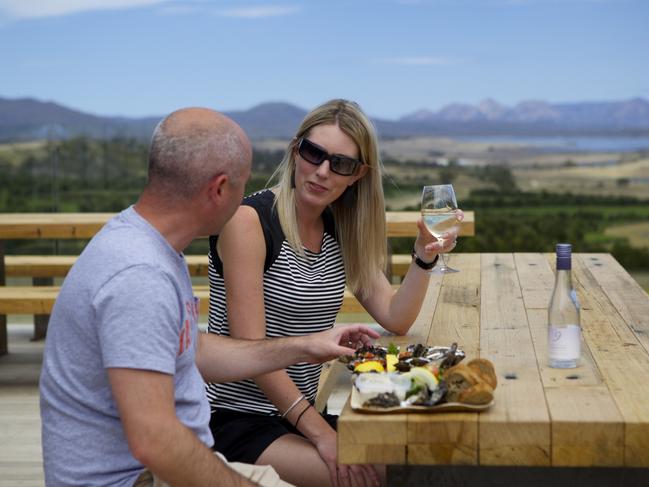
The 57-year-old feels fortunate to be the current custodian of “this little piece of paradise”.
Travers is chair of the East Coast Wine Trail Association, an organisation which was established to help run the Great Eastern Wine Week.
The event began seven years ago and was initially run by Freycinet Lodge as a way to attract visitors to the region during winter.
But the event has since been handed over to the East Coast Wine Trail Association and East Coast Tourism Tasmania.
It has grown from what was initially a Great Eastern Wine Weekend to become a 10-day festival, with events spanning from Buckland to Pyengana.
The event received Covid recovery funding from the federal government and Travers says a lot of work has been done with interstate media to attract visitors from outside Tasmania. Previous festivals attracted an almost-entirely Tasmanian audience but booking data collected so far for this year’s Great Eastern Wine Week suggests about 30-40 per cent of patrons will be visiting from interstate.
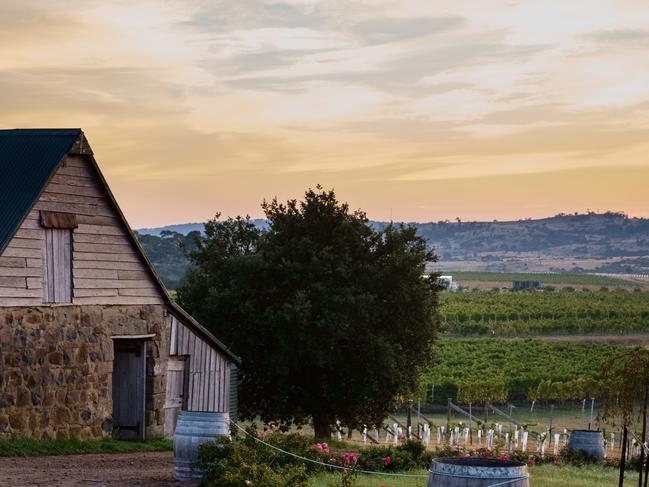
Travers says with premium wine, food, accommodation and scenery, the East Coast was a fantastic place to visit, especially during Great Eastern Wine Week.
At Craigie Knowe, there will be a Gems of the East Coast Degustation Lunch on Saturday September 10, with six courses cooked on site by chefs from Saffire Freycinet, followed by a high tea with matched wines on Sunday, September 11. On Tuesday, September 13 there will be two Plumm Masterclasses, teaching wine enthusiasts about how the glassware they use interacts with wine. There will be more high tea sessions on Friday, September 16, and an Unwind in the Vines live music event with food by Big Pete’s Eats and beer by Malting Lagoon Brewery on Saturday, September 17. Festivities wrap up on Sunday, September 18, with the East Coast Degustation Delight, a six-course lunch with matched wines, prepared by Chris Lucas from WhatGrows.
Travers says the Great Eastern Wine Week is a fantastic opportunity to interact with customers and showcase his winery and his products.
“It’s good to see people really enjoying themselves,’’ he says.
“Talking to the customers and seeing what they like. Most people walk away very happy.’’
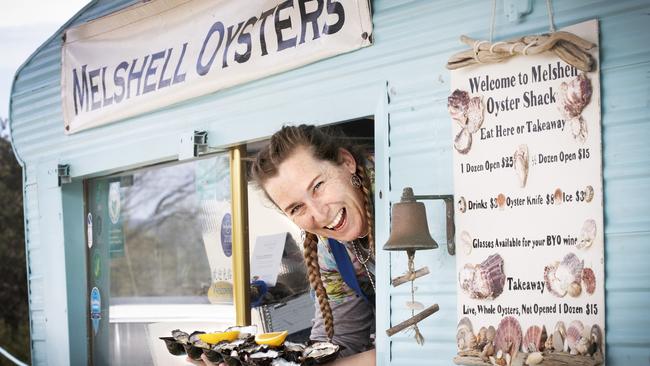
CASSIE MELROSE
MELSHELL OYSTERS
Cassie Melrose laughs when she recalls her unconventional first date with her now husband Ian Melrose.
“Our first date was to look at an oyster barge at Margate,’’ she says.
But despite the unusual courtship, Cassie was smitten, marrying Ian 20 years ago and becoming part of his family’s Melshell Oysters business which was established at Dolphin Sands in 1984.
“We were originally only a wholesale farm, just selling to the mainland,’’ Melrose explains.
“The oysters were really just a commodity, we didn’t really think about them as a food.
“At that time all Tassie seafood was going to Hong Kong or other places internationally, there was not a lot left on the island.’’
However, the Melroses saw an opportunity to sell some of their premium oysters direct to tourists and the local community.
And it was a move that paid off, with about 75 per cent of the farm’s oysters now consumed in Tasmania, either at their on-site Oyster Shack, at farmgate markets or at restaurants across the state.
“It surpassed what we thought it could do,’’ Melrose says.
“And it gives you that extra pride in your product. When you’re standing at the till there’s nowhere to hide – if a product isn’t up there, the customer will tell you.’’
Selling direct to the public also inspired the development of a unique gold shell oyster range which not only looks unusual, but has attracted praise for being more flavourful.
Melshell’s traditional oysters attracted a score of 40/50 at the Royal Tasmanian Fine Food
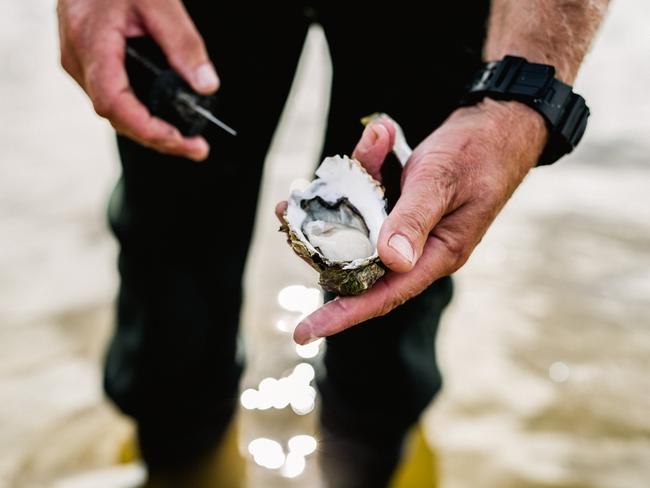
Awards, while the farm’s gold shell oysters were rated 49/50. Visitors who tried the oysters also raved about them.
“They are like the redhead in traditional oysters, there’s one in every 20 dozen or so,’’ Melrose explains.
“We thought these look pretty cool, so let’s make a family line. So we bred from the redheads and created a whole gold shell family line. They are a visible gold colour, they have a bright orange shell.’’
As an added bonus the gold oysters are also faster growing and have less mortality.
Melshell Oysters will team up with Gala Estate Vineyard as part of the Great Eastern Wine Week, to offer Sip and Shuck events on Saturday, September 10 and 17, at the Melshell Oyster Shack.
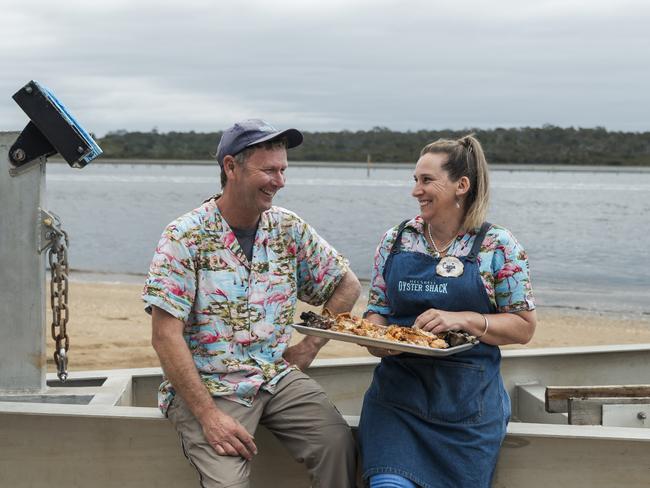
The farm reopened after Covid with a liquor licence which Melrose says has been a great way to showcase how well the oysters match with local wines, allowing visitors to enjoy a farm tour followed by a tasting session. She was previously a farmhand on the property, working closely with Ian. But she took a break from farm life to have two children and during that time Ian needed to employ another farmhand to take her place. So setting up the Oyster Shack was a great way for Cassie, 44, to return to the farm in a different capacity. She enjoys meeting customers and having a chat. The couple’s sons, who are now 15 and 8, also enjoy helping on the farm.
“Travellers are such curious bodies … it’s nice to talk to customers, share our product and tell them our story,’’ Melrose says. “Just educating people and connecting with people is great.
“And the Great Eastern Wine Week is really the start of the tourism season. After wine week it’s pretty steady here on the East Coast as the days get longer, so it’s a great way to kickstart the season.’’
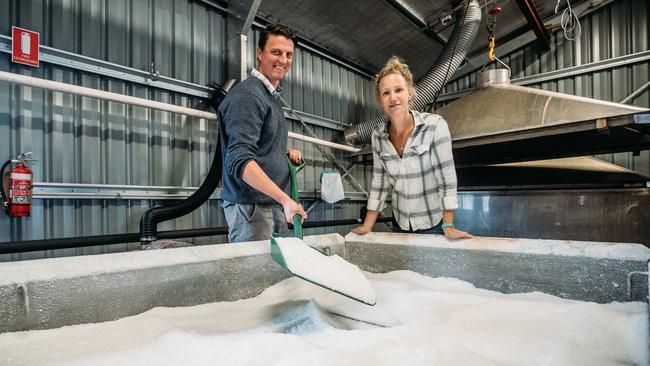
ALICE LAING
TASMAN SEA SALT
Alice Laing and Chris Manson had been living in the UK when they decided to return to
Manson’s home state of Tasmania in 2013 to start a sea salt business.
“Chris is from Tasmania originally, and I’m from the UK,’’ Laing explains.
“We were living in the UK and came to Tasmania on holiday and the seed of the idea (for the business) was sewn.
“Chris spent his summers on the East Coast, it is a place that is very important to him. And when I came here I was just blown away by how beautiful it was. It just seemed crazy that you’ve got this unbelievable ocean, yet you’re shipping salt from halfway around the world. So we decided that someone should be making sea salt in Tasmania, and maybe that was us.
“And we have been building the business ever since.’’
There are other salt producers in Australia, but most use big, open salt flats and rely on the sun to dry out the salt over many months.
“Here, we’ve got too much rainfall, so we had to look at other ways of harvesting sea salt,’’ Laing, 40, explains.
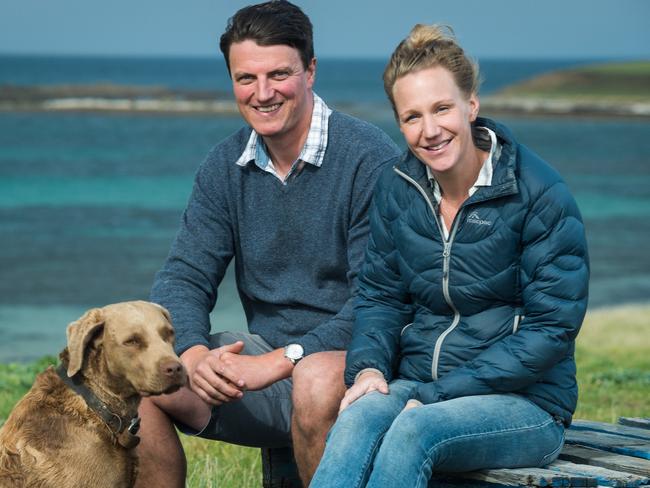
While still living in the UK, they looked at some sea salt business over there for inspiration, where the climate was more like Tasmania.
They found that some methods used were too energy intensive, which did not fit with their desire to protect Tasmania’s pristine environment.
So they came up with a unique way of harvesting sea salt, which they believe no one else in the world is doing, which involves drawing water from the ocean and then using evaporative cooling, powered by solar panels, to extract the salt.
“The purity of Tasmania’s ocean and environment is what makes the salt so unique. All we do is evaporate off the water … we’re left with bright white sea salt flakes, and we don’t have to clean or rinse it like others do. All the minerals and nutrients stay in salt, which gives it that depth of flavour.’’
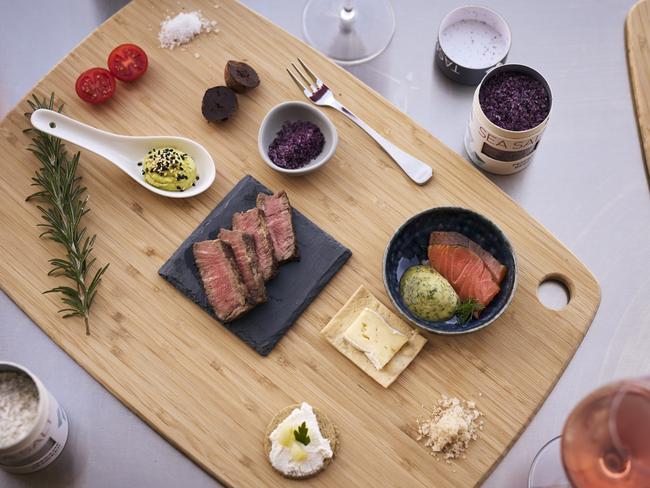
Manson previously worked as a lawyer for The Football Association in the UK (the governing body for soccer), while Laing worked on sponsorship for the London 2012 Olympic Games and also once ran a freelance catering business.
“We just love food, we love flavour,’’ she says.
“For us, it was very much about starting a food business, that’s what drew us to this. To create a pristine salt that could make food taste amazing. People can try our salt while looking at the ocean and seeing where it has come from, our salt is a little piece of the Tasmanian ocean.’’
Tasman Sea Salt and Mayfield Estate have teamed up for a grazing walk as part of the Great Eastern Wine Week, which will take visitors from the cellar door at Mayfield Estate to Tasman Sea Salt for a Salt Sommelier tasting experience which pairs salt with locally-sourced produce and wine.
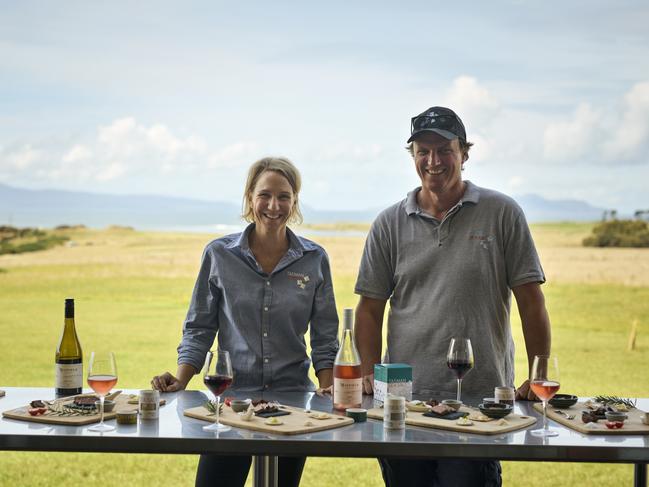
This is the first time Tasman Sea Salt has been part of the Great Eastern Wine Week and Laing says she is excited to be partnering with Mayfield Estate owner Bruce Dunbabin for the event.
“When we arrived here back in 2013 we just knocked on farmers’ doors as we had nowhere to start a business and nowhere to live,’’ Laing recalls.
“So we knocked on doors to ask if farmers had land they would lease us to set up a salt business, we thought people would laugh at us, and think we were crazy, but they were actually just so helpful.’’
Dunbabin offered them a spot by the water on his Mayfield property, and the two businesses have been working together since, with sea salt available from the Mayfield Estate cellar door.
Manson and Laing live in Swansea and have three children, aged 4, 5, and 7.
“It has definitely been challenging at times,’’ Laing admits of moving to the other side of the world and building a business from scratch.
“But it’s a wonderful place to live … moving from central London to rural Tasmania was quite a culture shock but I can’t imagine bringing up children anywhere else. We feel incredibly lucky to be here and to go to work every day in such a beautiful part of the world. It’s such a fantastic community here which is so supportive of new businesses and new ideas.’’
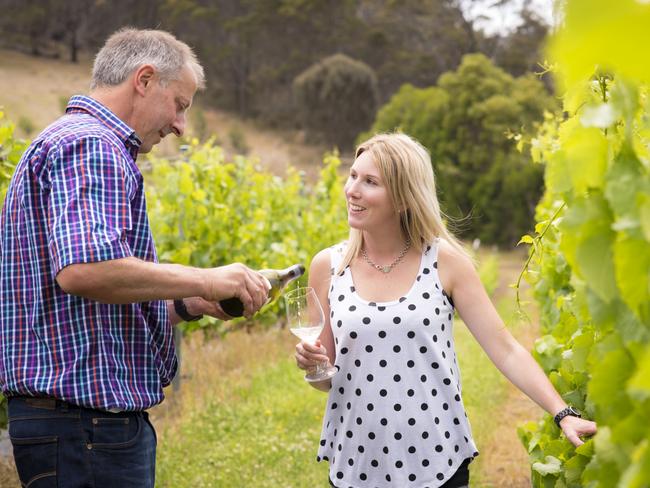
CLAUDIO RADENTI
FREYCINET VINEYARD
Winemaker Claudio Radenti remembers when the Great Eastern Wine Weekend was a low-key event, incorporating just a handful of local wineries.
He says it has been great to watch the event grow steadily every year as the region produces more great wine and food, which consumers can’t get enough of.
“There’s no better way to relax and unwind than to escape the city and go to the East Coast for the weekend, you really feel like you’ve had a weekend,’’ the 60-year-old says.
“The East Coast is just so beautiful and so spectacular, from one end to the other.’’
Born and raised in Tasmania, Radenti grew up helping his dad make wine and soon started making it himself.
“Like a lot of Italian families, Dad made a bit of wine at home for himself,’’ he recalls.
“Then as a teenager, I read a few books and made some wine by myself … and my dad’s friends preferred my wine to his.’’
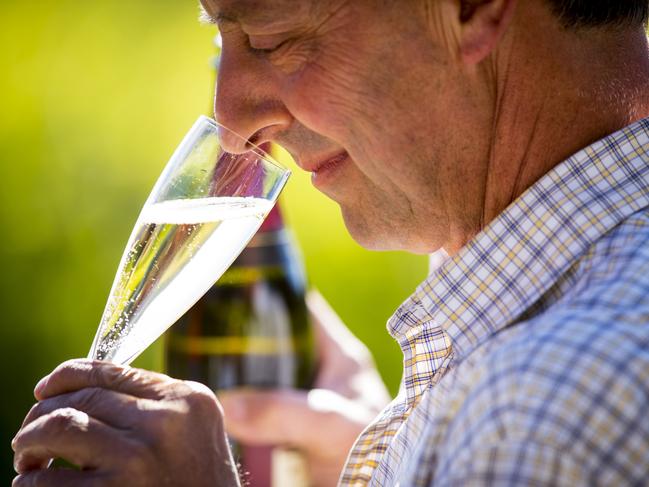
He moved to South Australia to study winemaking and says his passion for the industry has continued to grow.
“I’ve never looked back,’’ Radenti enthuses.
“It’s just a wonderful industry to be in.’’
During his time working interstate, Radenti met his partner, Lindy Bull, and they came back to Tasmania in 1993 to work on her family vineyard, which was established in 1979 and was one of the state’s first commercial vineyards.
“It was quite an adventurous thing to do here on the East Coast,’’ Radenti says.
“It was back in 1979, in the early days of Tasmania’s viticulture and wine industry, and there were vineyards in the north and south of the state, but not in the east.’’
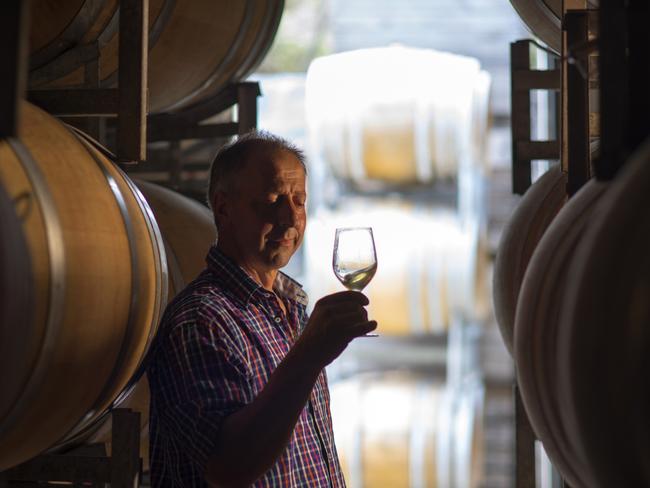
He says Tasmania was barely producing 80 tonnes of grapes back then, a stark contrast to the record 17,180 tonnes of grapes produced in the state in 2019.
Since Radenti and Bull started working on the property, the 4ha vineyard has grown to 16ha, in addition to a 4ha olive grove.
He has a “great team” working on site, including many staff who have been with the business for 20 years or more.
“We have a good, loyal team and we’re just really passionate about what we do here and what we can achieve off the property,’’ he says.
“It’s exciting, there’s never really been a better time to drink Tassie wine. Tassie has become a great place for grapes and wine … it really warms my heart to see the success that Tassie wines are achieving on the world stage.’’
As part of Great Eastern Wine Week, Radenti is offering two Discover Freycinet Vineyard with Claudio Radenti sessions, on Saturday, September 10 and 17.
The two-hour afternoon sessions will include a vineyard tour and wine tasting, as the winemaking veteran explains the finer details of viticulture and winemaking in a unique place like Tasmania. He will also offer a taste of some older wines from the winery’s museum, in contrast to the vineyard’s newer wines, to give visitors an insight into how wines evolve over time.
“Everything is grown, fermented, matured and bottled in the state and essentially our wines are a liquid expression of this place,’’ Radenti says. “I can’t say enough good things about how good Tassie is, I wouldn’t go anywhere else to make wine, you can do so many good things here.’’ •
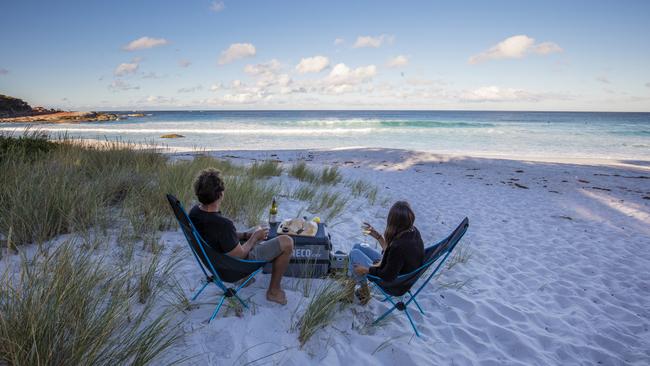
The Great Eastern Wine Week 2022 runs
from September 9-18, with more than 60 events
on Tasmania’s East Coast. For tickets and the
full program visit eastcoastwinetrail.com.au or follow @eastcoast_winetrail on Instagram.





